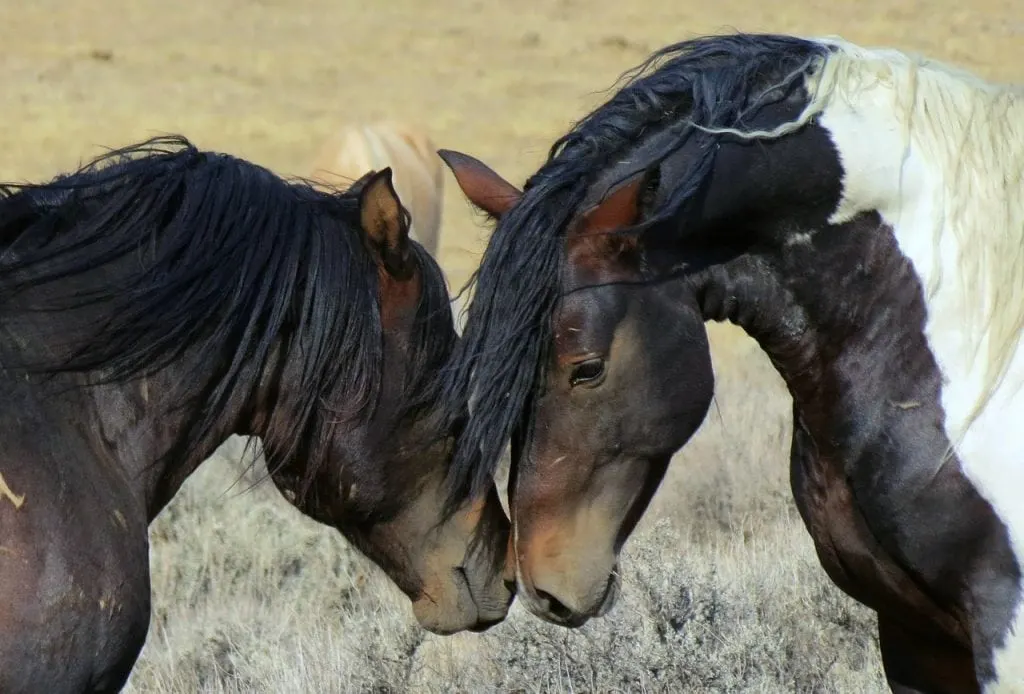
As part of an ongoing strategy to ensure that wild horses and burros receive adequate and humane care in the hands of their adoptive owners, the BLM Wild Horse & Burro program may conduct compliance checks on any and all animals at its discretion.
A 2004 version of the BLM Compliance Check Handbook outlines basic procedures that BLM employees and volunteers should follow.
The compliance check procedure seems shrouded in mystery and can be a source of concerns for new and would-be adopters. It really isn’t anything to worry about and I’ll answer some commonly asked questions in the post that follows.
Please keep in mind that I am not a BLM employee. I am a mustang trainer with experience training and finding adopters for hundreds of BLM horses and burros. Any specific question you have about your situation or your wild horse or burro should be directed at your local BLM office as they have the final say in everything.
Table of Contents
What If The BLM Finds A Problem At My Compliance Check?
If the BLM agent or volunteer finds an issue with the care or maintenance of your BLM horse or burro, they generally won’t take the animal. Instead, the BLM will issue a notice of noncompliance.
This notice will list the violations that were found by the inspector and then designate a time frame for you to correct the issue. They will let you know who to contact once the issues have been resolved so that a re-inspection can happen.
Remember, the BLM wants to see your adoption succeed. They will, as much as possible, provide you with the information you need to properly care for your adopted animal.
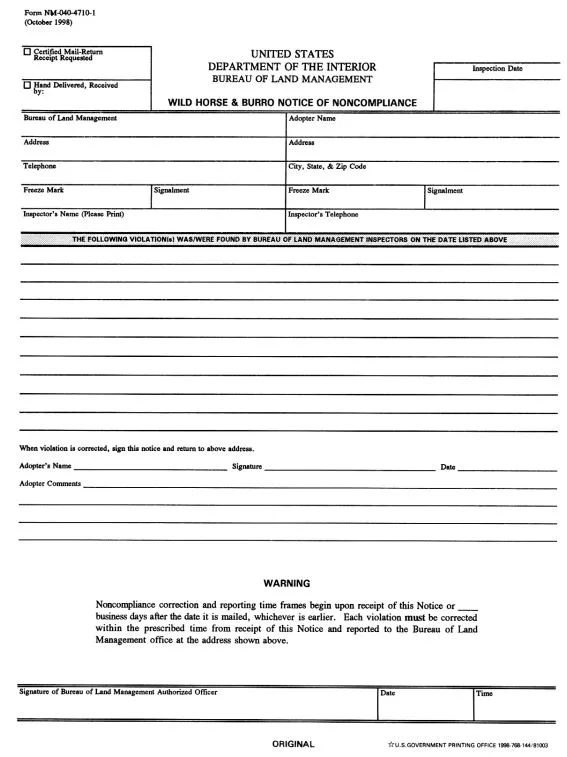
Will they take my horse?
It is within the power of the BLM to repossess your adopted wild mustang or burro but they will generally give you the opportunity to correct any compliance issues.
You may receive a compliance warning like the one above. You may also receive a non-compliance letter. In any case, the BLM will describe the actions you are required to take to become compliant and keep your adopted animal.
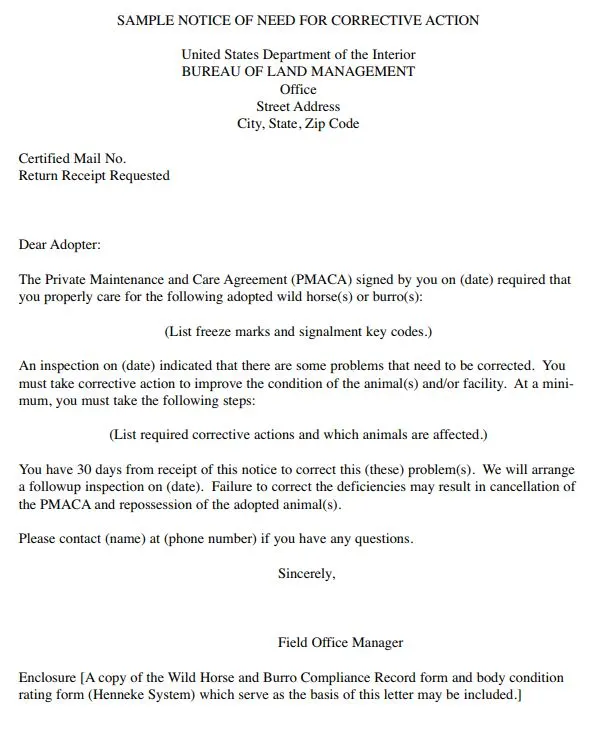
How Do I Stay in Compliance?
In order to stay in compliance with your wild mustang adoption, you just need to adhere to the items you agree to on the PMACA (Private Maintenance and Care Agreement). As long as you do that, you should be OK. Here are some of those items:
Provide Water & Shelter
Adequate food and shelter must be provided. Each region has different shelter requirements but, as long as your horse still has access to whatever shelter was listed on your application, you should be OK.
Your horse also needs access to clean water at all times. Usually access to a water tub accomplishes this easily. During winter, you will want to make sure that your horse or burro can access water that is not frozen.
Provide Humane Care & Training
You should strive to use natural horsemanship, positive reinforcement and/or least resistance style training methods. There really is no right or wrong answer so long as you consider the horses health and well being during training.
There are several books available on the topic and many videos available online for free demonstrating least resistance training techniques. When training your wild mustang or burro, you want to avoid any training methods and training tools that are likely to result in injury to the animal.
Maintain Adequate Weight & Hoof Condition
Weight can be an issue especially for first time horse owners. Your wild mustang (or burro) needs access to good quality forage on a daily basis. The Henneke system of body condition scoring is the industry standard on this but basically, you shouldn’t be able to easily see your horses rib bones.
Sometimes feeding isn’t enough to maintain body condition. If you feel your wild horse or burro gets enough good quality forage each day but is still losing weight, your vet can help you determine if there is an underlying issue. De-worming can reduce parasite load and help your horse to gain weight. In addition, your horse or burro may need to have his teeth floated to remove sharp points.
One thing I highly recommend is that you take a picture of your horses and burros routinely, around the same time each month and compare that picture to the previous month. This allows you to easily see the difference in your horses and burros from month to month. You will be better able to determine if they are gaining weight, losing weight, or staying in good condition.
Hoof care is another concern. You will want to make sure your wild mustang or burro has regular trims by a farrier. Horse shoes can be used as well but are not a requirement. Many mustangs are able to get along just fine with a hoof trim every 8 – 12 weeks depending on the area and the footing.
If your horse isn’t gentled to a point where it is safe or feasible to have a farrier work on him or her, consider alternate methods while you continue to gentle him. You may try setting up a wild horse hoof trimming station, for example.
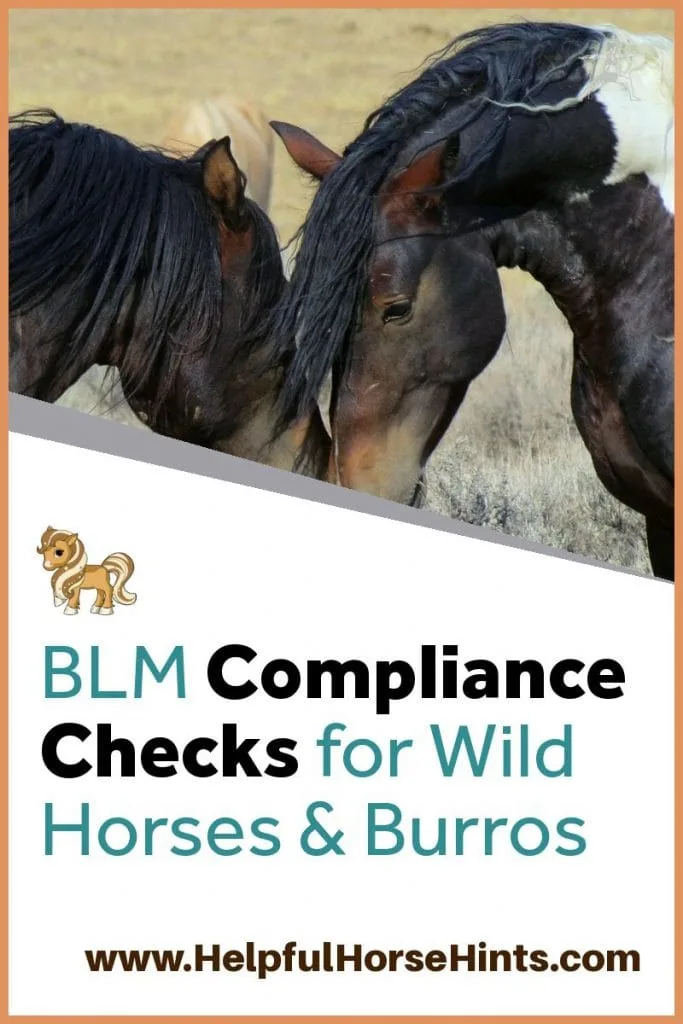
Notify BLM of Any Changes in Possession or Location
If you need to move your horse from the location on your original adoption application, you must notify the BLM. I’ve done so via email with something as simple as:
Hello, I am writing to let you know that I am moving my BLM mustang, Freezemark xxxxxxxx from __________________(OLD ADDRESS) ___________ to ________________(NEW ADDRESS)__________________ as of xx/xx/xxxx. If you have any questions or need any further information please feel free to contact me.
Your Name
Your Phone Number
If they need anything from you they will let you know. It is possible they will ask you to submit a new application with details. They could also ask for pictures of your horse’s new corral. Whatever the case may be, they will let you know.
If your mailing address changes, you should let them know that as well. The BLM won’t always assume the horse’s facility address is the same as the mailing address. You will want to make sure they have your correct mailing address so that you receive the title application when the time comes.
Frequently Asked Questions
What if I want to give away or sell my untitled Wild Mustang or Burro?
Your PMACA specifically states that you can’t sell your BLM animal until a title is issued. You can, however, find a new adopter. You can even ask a “training fee” for the animal but you can not “sell” it.
We covered this topic in more detail on our post 7 FAQ’s about Selling a BLM Mustang. Remember that the same rules apply to BLM mustangs as BLM burros anywhere on this site.
What If My Untitled Mustang or Burro Escapes?
If this happens you will want to notify BLM immediately. The reason the BLM asks so many questions about fencing and facility is to try and help avoid a situation where the mustang or burro escapes.
In the unfortunate event that does happen you should call your local BLM office and let them know. They will be able to help you with the next steps.
What if My Untitled Wild Horse or Burro Dies?
If your horse or burro dies before you receive title you must let the BLM know. A phone call to your local corrals is usually best. They may require a statement from your veterinarian or other individual regarding the cause of death.
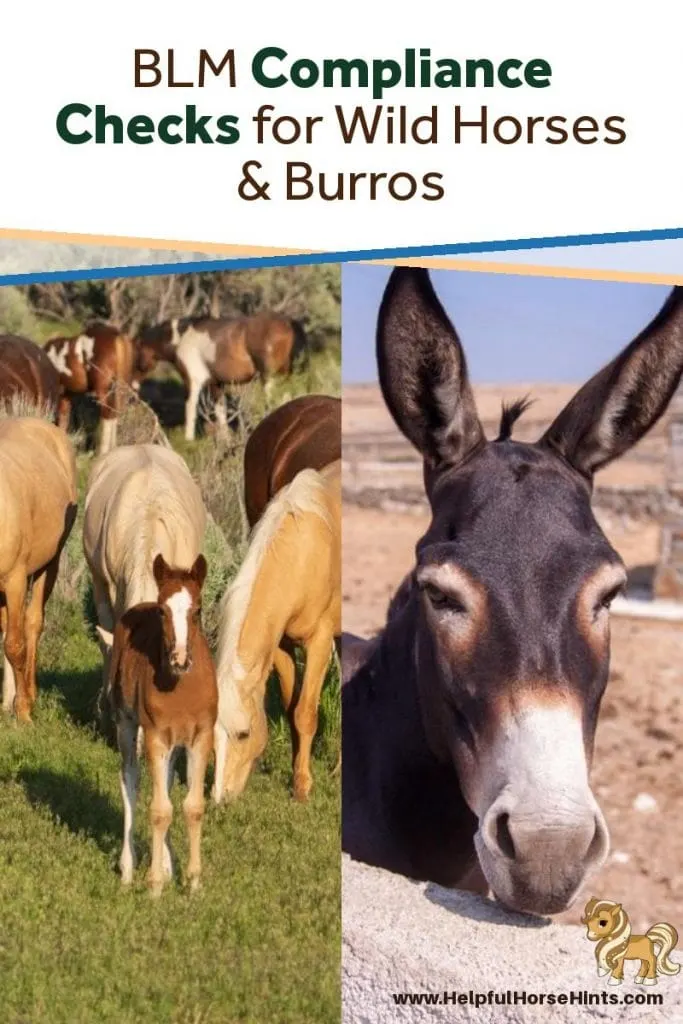
What if My Wild Mustang or Burro is Stolen?
If your mustang or burro are stolen you should notify your local law enforcement agency and file a police report. Be sure to include the freezemark number of the animal(s) in their description. If possible, you should provide a copy of the police report to your BLM office.
Will I Be Inspected?
BLM can inspect any adopted BLM horse or burro. BLM employees have said that all horses adopted as part of the Adoption Incentive Program will be physically inspected.
What If My BLM Burro or Horse isn’t Halter Broke Yet?
Training isn’t a requirement of your PMACA. Of course, it benefits the horses and burros to be able to handle them for vaccines and routine trimming but it isn’t a requirement to receive title. The BLM would prefer to see that your animal has been gentled but as long as proper care is being provided, it isn’t a requirement.
What If I Can’t Care for My BLM Wild Horse or Burro?
If you can no longer care for your untitled BLM Mustang or Burro, you can relinquish it back the government. You should provide the BLM with written notice as soon as possible. They will work with you to either transfer the animal to another applicant or to return the animal to the BLM corrals.
Ideally you would advertise the horse locally and try to find an approved applicant to take over the horse or burros care. The BLM will help with any needed paperwork and typically prefers this to returning the animal. But, untitled horses and burros can be returned to the BLM if need be.
Here is a sample PMACA termination request letter you could use if needed.
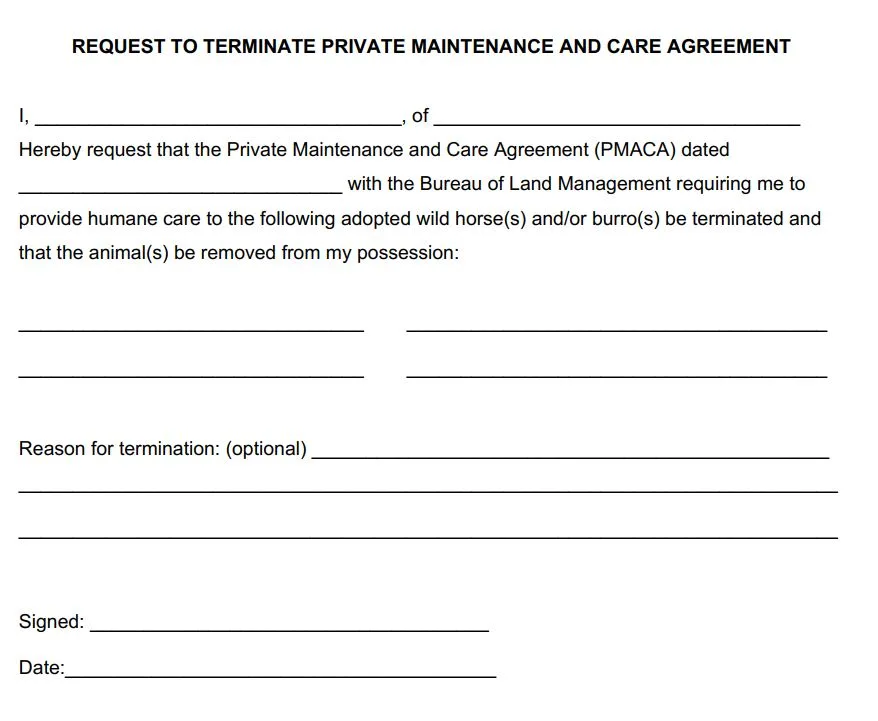
Conclusion
The ultimate goal for any wild horse or burro adoption is success for the animal and adopter. Compliance checks performed by the BLM help to ensure that horses and burros adopted from the BLM are receiving adequate care. You should not be worried if a BLM representative calls you to schedule a compliance check.
Communication with the BLM goes a long way. You should consider the BLM employees as a great resource to help your adoption succeed.
RELATED POSTS
- Adopting Wild Horses In Oregon
- BLM Wild Horse & Burro Program – Request for Information
- Famous Mustang Horses Immortalized by Breyer
- ALL Mustang Specific Posts on this Blog

